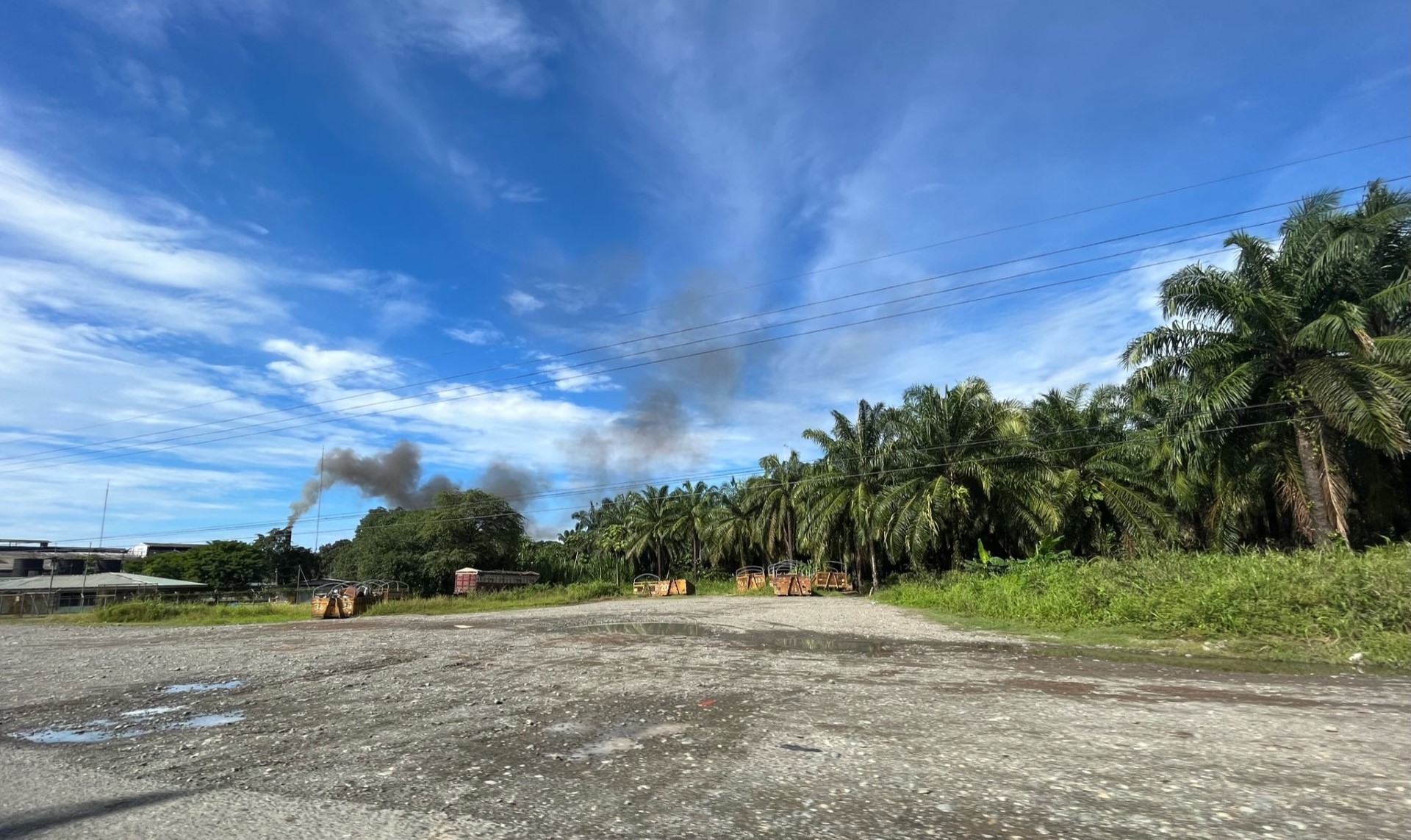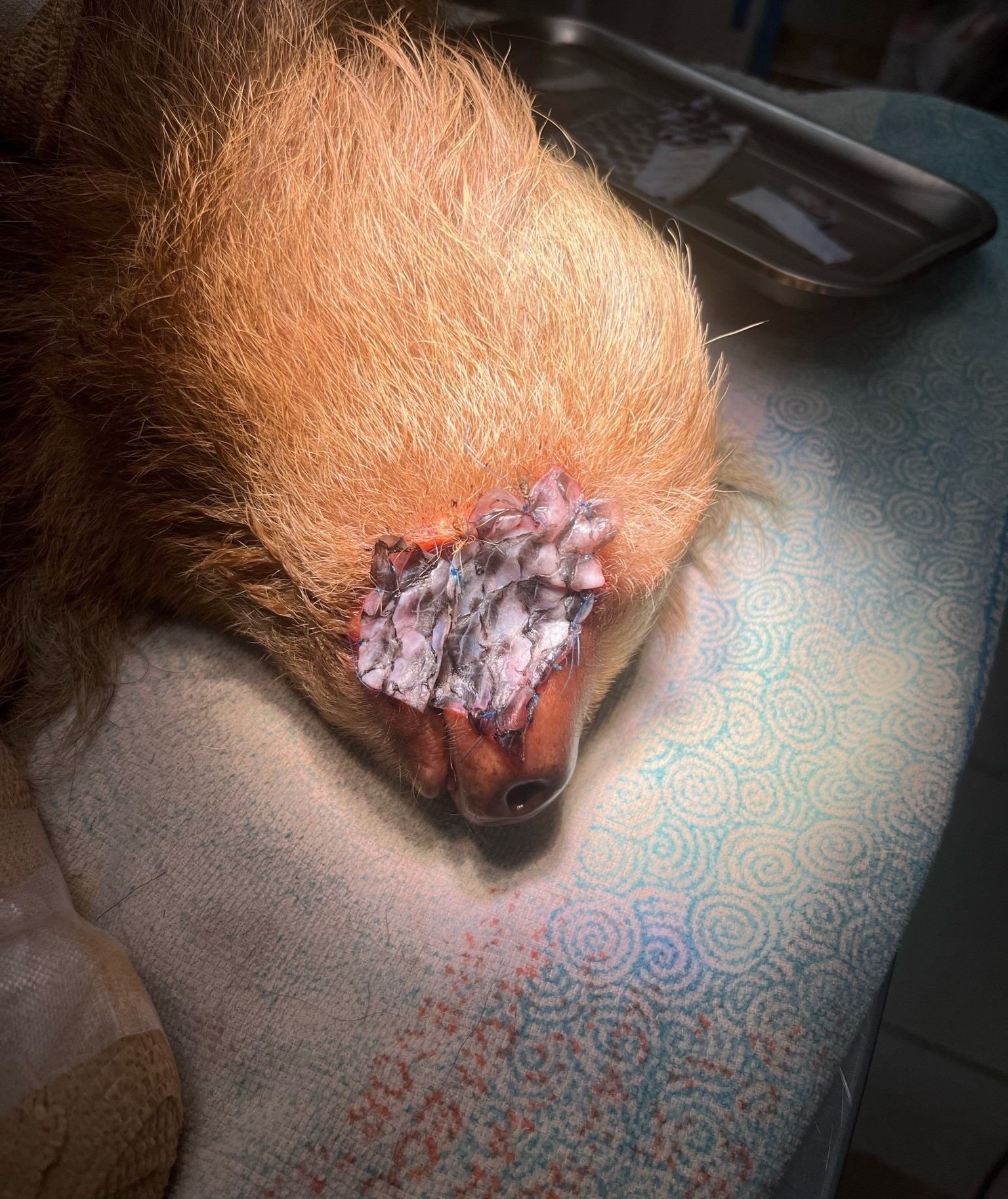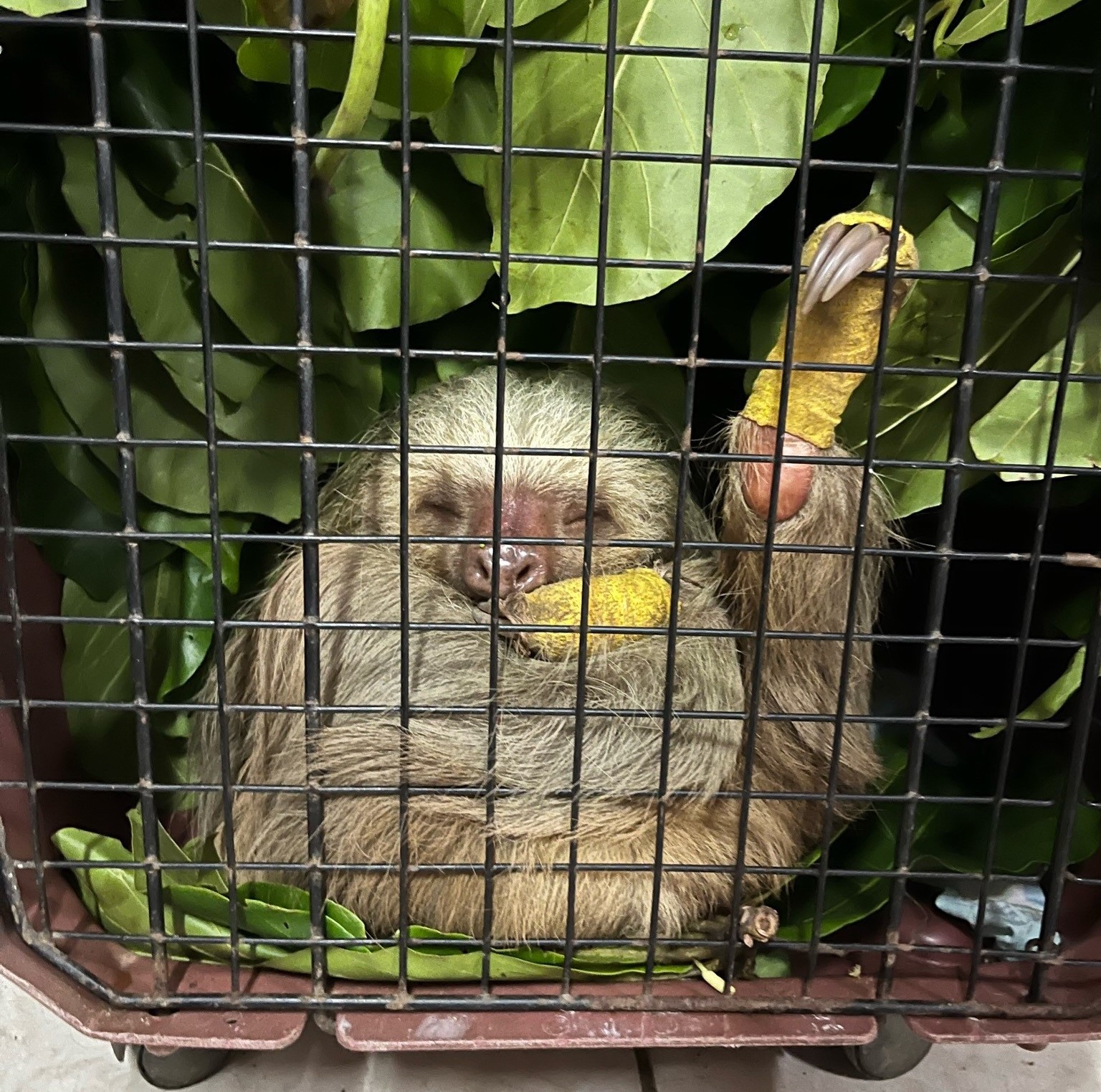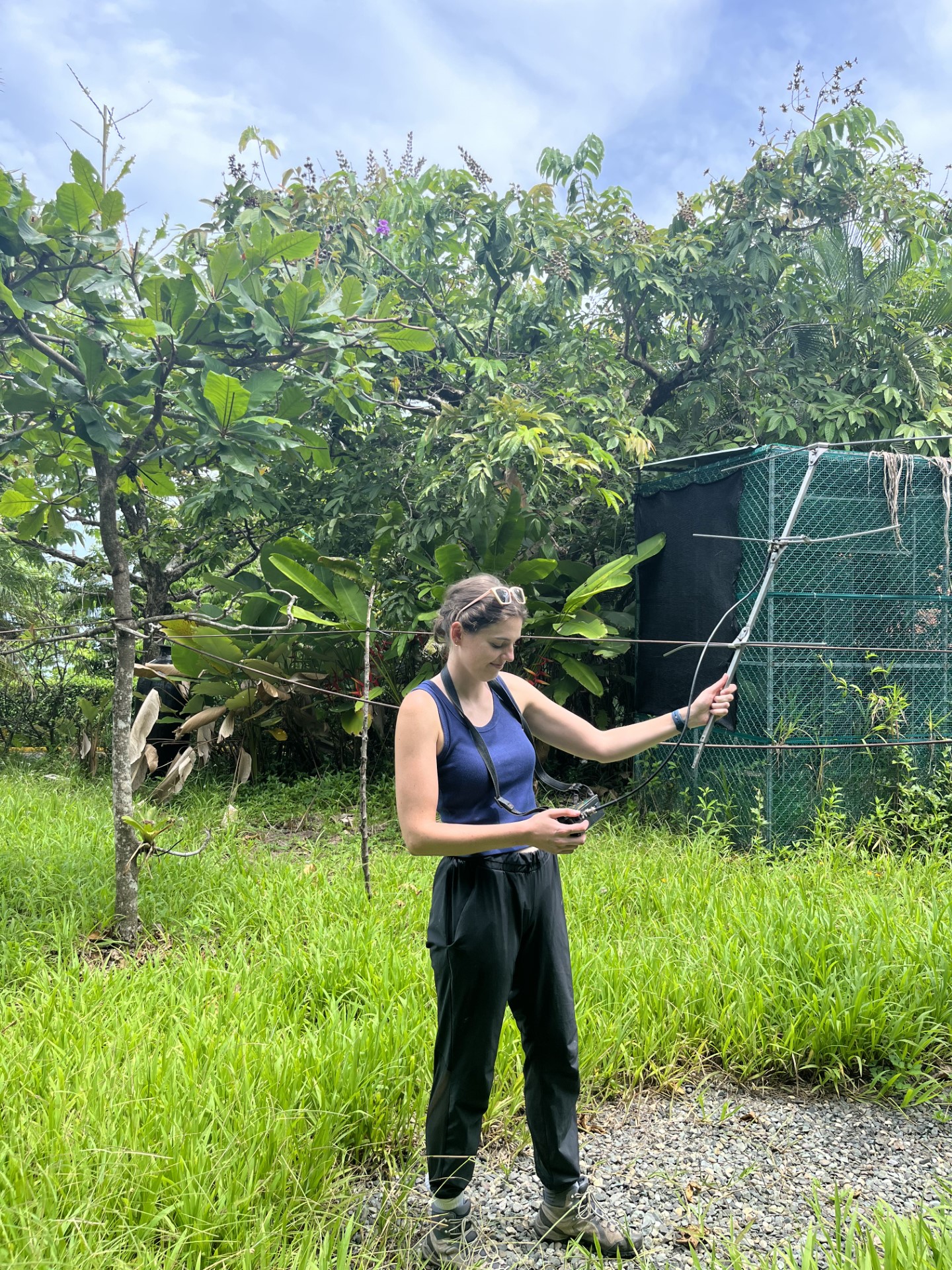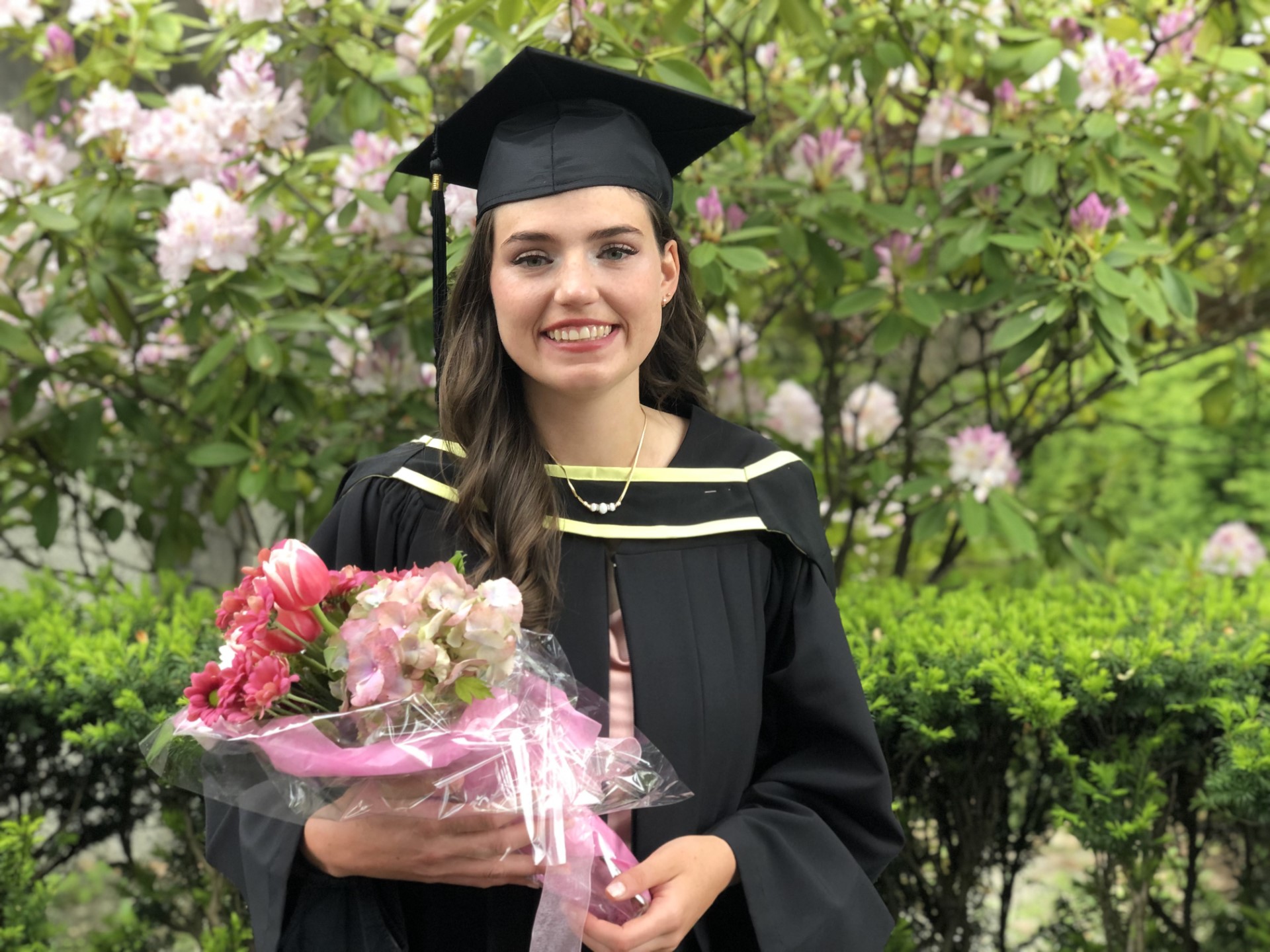The Problem with Power Lines: Electrocution of Sloths in Costa Rica
By Sylvia Kimmel, DVM ‘26
Did you know that the second most common cause of injured sloths coming into rescue centers is electrocution? If not, you are in the majority. There is little to no literature about sloth electrocution in the academic world, even though it is such a pervasive problem. For other arboreal animals, such as birds and monkeys, more studies exist, with the majority of research focused on human electrocution victims. It is for this reason that wildlife veterinarians in Central America have been adopting techniques from human medicine to care for electrocuted sloths.
Thanks to the funding I received from CVM’s Expanding Horizons International Education Program and the Dean’s Leaders Program, I was able to spend eight weeks in Manuel Antonio, Costa Rica working with four electrocution cases under the supervision of Dr. Ana María Villada at The Sloth Institute (TSI).
How sloths get electrocuted
Though there are many protected natural areas within Costa Rica, electrocutions occur mainly because of highly fragmented wildlife habitat. In the Manuel Antonio area specifically, its three-square-mile national park is bordered by large palm oil plantations that divide tracts of suitable habitat. In order to find more food or territory, sloths are forced to climb on the electrical wires that hang above ground, which look very much like a branch to an unsuspecting sloth. Unfortunately, these wires can send a huge electrical current through the sloth, causing massive injuries. During my project, I was able to observe the slow and sometimes irregular healing process.
The telltale sign of electrocution in sloths is burns, usually on the hands or feet where they touch the wire. Ellie, one of the cases that came into TSI’s care during my stay, had burns not only on her limbs but also on half of her face. The burn on her face was so severe that Dr. Ana was forced to remove her affected eye in order to manage the dying tissues.
Novel application of tilapia skin for burn wounds
For sloths like Ellie with third- and fourth-degree burns, wound care is where veterinarians can truly make the most difference in the outcome of a case. One of the most interesting techniques used during my stay was the application of tilapia skin on the burn wounds, which Dr. Ana was the first to develop in sloths.
Tilapia skin has been shown to have regenerative and healing properties in humans due to its high content of collagen type 1 and its ability to stay moist for long periods of time. Tilapia skin is also relatively low cost as it would otherwise be thrown away by fisheries, and therefore is a great product for use in wildlife medicine since funding can sometimes be sparse.
The tilapia skin is treated with various sterilizing agents and radiation to kill bacteria and viruses as well as preserve its shelf-life for up to two years. It is sutured to the burn wounds to ensure that it will stay in place for ten days. Ellie was treated with tilapia skin, and ten days later when it was removed, her wounds were significantly improved. The tissue looked healthier and the tissues were no longer actively dying.
Unfortunately, all of the damage from electrocutions cannot be seen on the outside of these patients. Though Ellie appeared to be improving on the outside, she stopped eating and became depressed about a month into her care and succumbed to her injuries the next morning. Internally, most sloths suffer from kidney and liver damage as a result of the electrocution, but Ellie’s bloodwork had been normal on arrival. This case, although disheartening, demonstrates the unpredictable nature of electrocutions. Though an animal can seem to be improving, tissue destruction can continue long after the actual electrical event.
Post-wound care and tracking sloths
Thankfully, there have been many success stories following electrocutions as well. Ruby, another electrocution case during my stay, is scheduled for release after months of care for her second- and third-degree burns. Some sloths released by TSI are tracked using radio telemetry to monitor how they are doing after rehabilitation, and to learn more about their behavior in general.
Though most of my time was spent in the clinic, I was also able to take part in weekly tracking and in this way participate in the full circle of wildlife rehabilitation. It had been thought for many years that young sloths hand-raised by humans could not be released into the wild and would be subject to a life in captivity. TSI was the first organization to prove this incorrect, and now rescue centers across Costa Rica successfully rescue, rehabilitate, and release sloths back into the wild.
In an important part of my project, I was able to take what I learned from cases like Ellie’s and develop a standardized protocol for assessing an electrocuted sloth upon arrival at TSI. This ensures not only that every sloth is stabilized in a streamlined way, but also that, once stable, electrocuted sloths will receive the wound management and follow-up diagnostics necessary for keeping up with the progressive nature of electrocution injuries.
Impact of this experience
This project significantly impacted my personal career goals, as I now have a desire to translate treatments used in humans and pets into wildlife and exotic animal medicine. As human medicine has been around far longer than veterinary medicine, there are many advancements that can be transferred across disciplines. This project also served to increase my passion for conservation medicine and my desire to work internationally with a variety of species.
I would like to thank The Sloth Institute for hosting me and providing me with an unforgettable experience that has enhanced my education and shaped my career goals. I would also like to acknowledge Alturas Wildlife Sanctuary and Toucan Rescue Ranch for their collaboration on the project. Finally, a huge thank you to my mentor and source of career inspiration, Dr. Ana María Villada, who showed me nothing but kindness and support during my project.
Sylvia Kimmel, class of 2026, is a second-year DVM candidate at the Cornell University College of Veterinary Medicine. She has a keen interest in exotic companion animal and wildlife medicine, and hopes to continue to do field work abroad in her future career.


